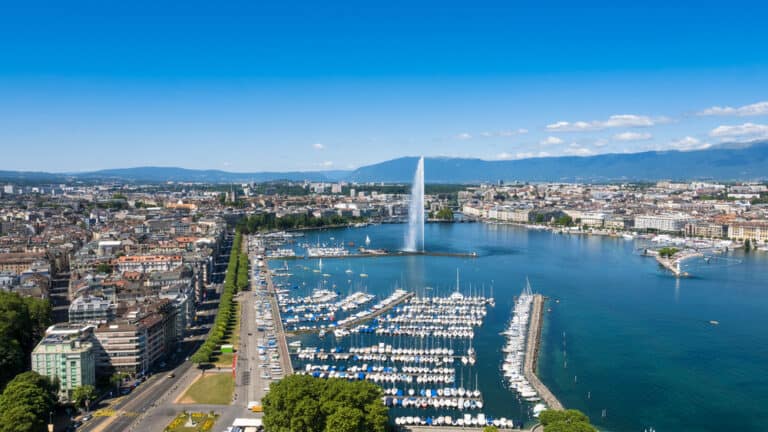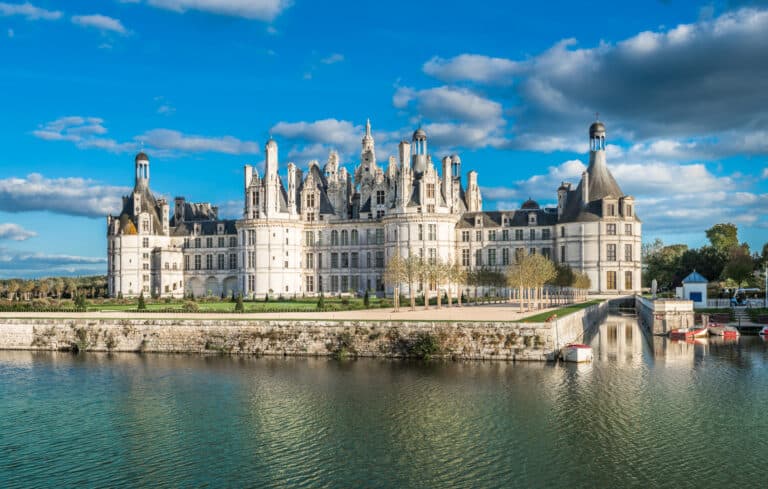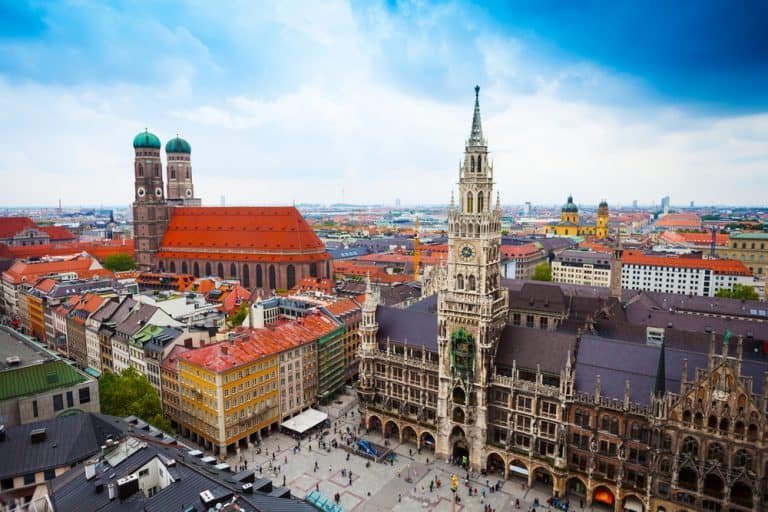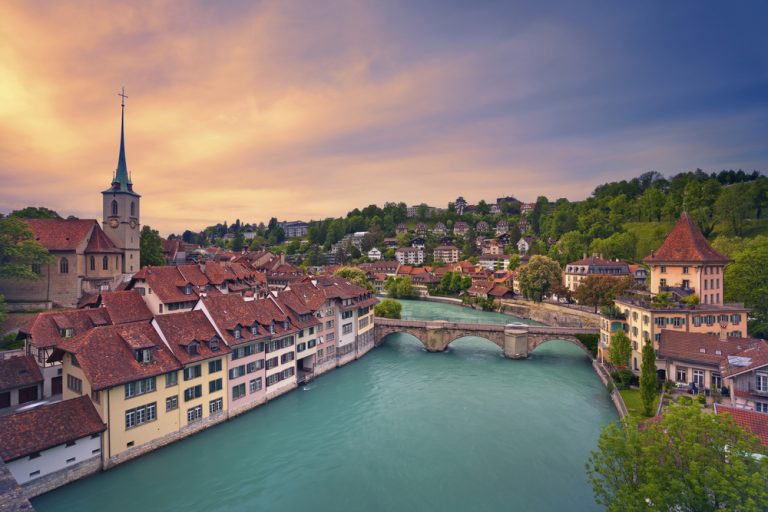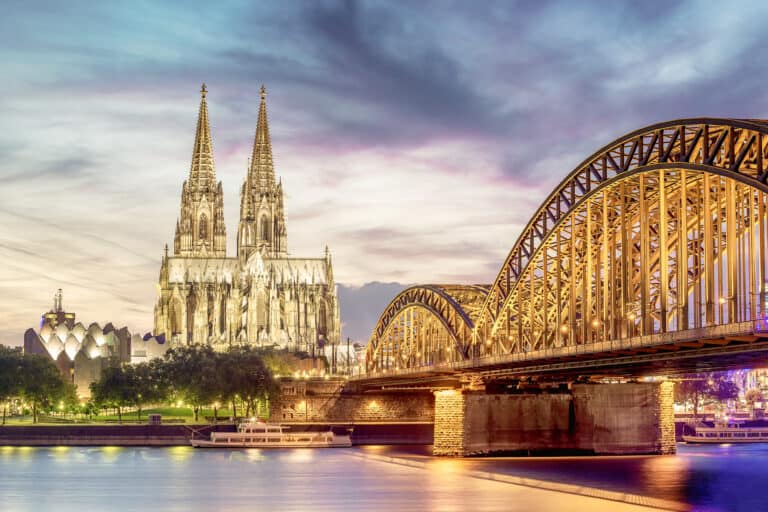A Porto city break: top things to do on a short trip
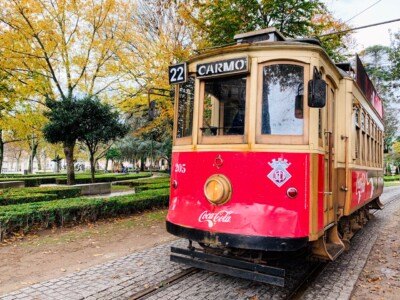
Famous for its port wines, Portugal’s second city has much more to offer visitors than a tasting session at one of its renowned port-wine lodges. There are many things to do on a Porto city break.
Boasting a UNESCO World Heritage centre, arresting views of the River Douro with its iconic suspension bridge, and a smattering of fascinating sights, Porto is not short of things to keep you occupied.
The gateway to the north, a Porto city break is also an excellent base for day trips to nearby areas of historic interest and scenic beauty.
Here are our suggestions for the top things to put on your itinerary when visiting this fabulous city (one of our favourites!).
This post contains affiliate links
Things to do on a Porto city break
1. Wander round the cathedral and cloister
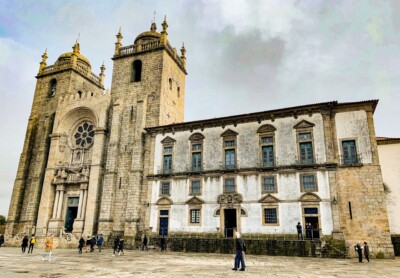
With its bird’s eye view of Porto’s famous suspension bridge (Ponte de Dom Luis 1) and the port-wine lodges, the cathedral (the Sé do Porto) is part of a colossal fortress-like complex that crowns Riberia’s hilltop.
It is situated in Porto’s historic centre, designated World Heritage status by UNESCO. Accordingly, the cathedral and its cloister are an excellent place to start your Porto city break, offering a great insight into Porto’s long and rich history.
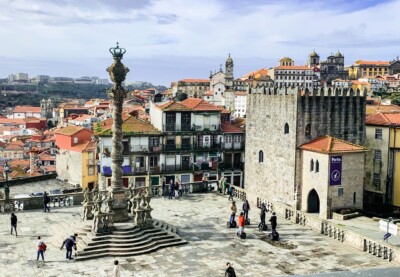
Founded in the 12th century, the cathedral stands in a large square. From here you can gaze down at the Douro dividing the old town from Vila Nova de Gaia (home to the port-wine lodges). You’re also awarded sweeping views of Porto’s skyline, marked by the distinctive town hall tower and the Torre dos Clérigos.
Porto’s cathedral was rebuilt and renovated over the centuries. It therefore reflects a mixture of different architectural styles and is brimming with history (Portuguese explorer Henry the Navigator was baptised here).
You could spend hours wandering around. The distinctive blue pictorial tiles (azulejos) that adorn the cloister’s walls is one of the many highlights.
While here, it’s also worth taking a quick tour round the Episcopal Palace, the former residence of the bishops of Porto.
Literally a two-minute walk from the cathedral, the palace is also part of the hilltop complex and stands closest to the river.
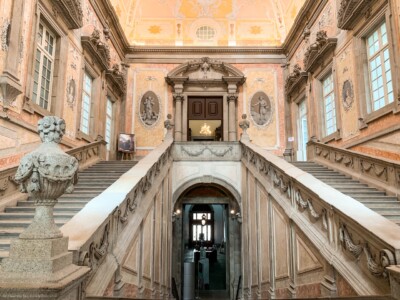
Its monumental stairway, complete with its stunning wall paintings and glass dome is something to behold. It may well leave you speechless.
You can also steal fabulous views of the suspension bridge and the riverfront from the windows of some of the palace’s stately rooms.
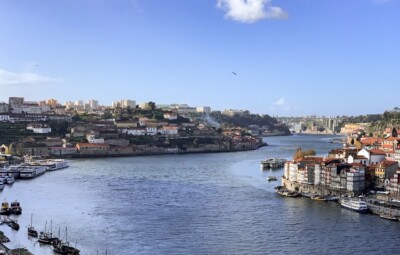
When you’ve finished your visit here, return to the cathedral square. You then have several options.
One is to join the main road running behind the cathedral. You can then walk along the top of the suspension bridge to Vila Nova de Gaia and take in some unforgettable views of the Duoro river below.
Alternatively, follow the steps leading down from the square and wander through the maze of winding medieval alleys that weave down to the River Douro. At the very bottom explore Ribeira’s riverside bars and restaurants.
2. Wander along Ribeira’s riverside promenade
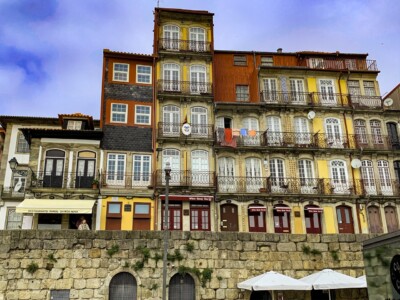
The highlight for many visitors on a Porto city break (for me anyway!) is the riverside promenade (Cais da Ribeira).
Here you get some incredible views of Porto’s most photographed landmarks.
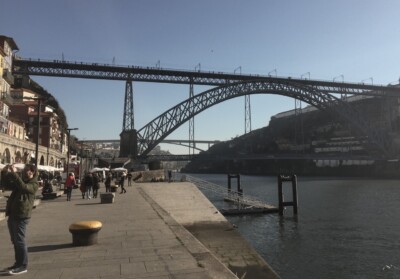
From the main square here, look up at the suspension bridge. Then cast your gaze across at the port-wine lodges in Vila Nova de Gaia on the opposite bank of the River Douro.
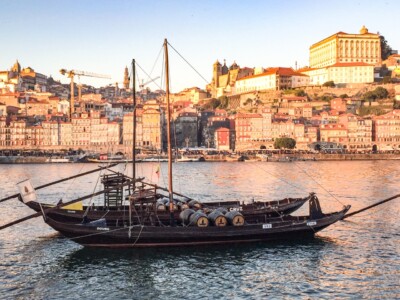
You’ll also see the famous boats (rabellos).
These were used to transport the port barrels from further upstream and they bob up and down in the wake of the cruise boats that operate from the quayside.
With your back to the river, look up and marvel at the beautiful, tiled town houses that line Ribeira’s waterfront. Make sure you grab something to eat and drink at one of the traditional restaurants here.
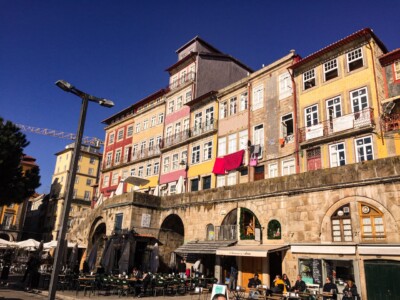
At night, the promenade is an ideal spot to sit and watch life go by. Better still as the light fades, you can see the distinctive port lodge signs light up across the water in Vila Nova de Gaia.
A few metres further on from the base of the suspension bridge on the left, you’ll see the entrance to the Funicular dos Guindais. The short shuttle ride that takes you from the base up a steep incline to Rua Augusto Rosa is recommended.
At the top, it’s only a few steps and you can catch a ride in one of the two vintage trams that run around the centre.
3.Taste port in Vila Nova de Gaia

Anyone who enjoys a glass or two of port cannot end their Porto city break without savouring Portugal’s most famous alcoholic drink. You can do this in several ways, including in the numerous cellars dotted around Vila Nova de Gaia.
See my earlier post for a round up of ways to do this, which includes as part of a sightseeing city tour and via a Douro river boat trip).
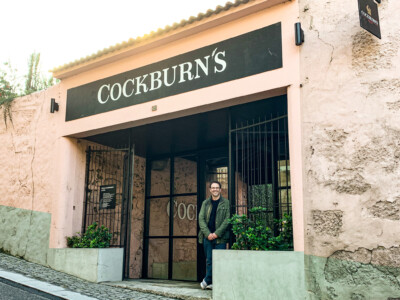
As you wander the riverfront area, you will see the signs for the grand lodges – Cockburn’s, Croft Graham’s, Sandeman and Taylor’s to name a few – scattered among the buildings in Vila Nova de Gaia’s skyline.
When night comes, the illuminated signs really bring the entire area to life. As well as port tasting, you’ll find plenty of eateries here.
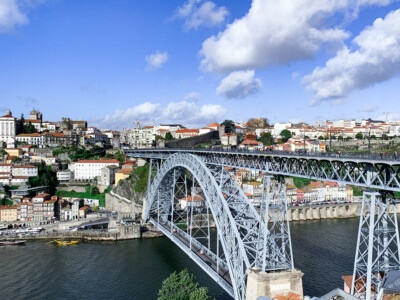
You can reach this area by walking across the lower level of the suspension bridge from Ribeira.
There are also metro trains that go across the bridge from Sao Bento train station (if you visit this station, make sure look up and around you in the main entrance and see the dazzling display of beautiful blue (azulejo) tiles that depict historic scenes. These run the entire length of the walls).
Alternatively, if you don’t mind heights, you can walk across the upper level to the Teleferica de Gaia, the cable car station at the summit on the other side of the river. It’s just a short ride to the bottom and the wine caves.
Near to the cable car station is a hilltop park called Jardim do Morro. Here you get fabulous panoramic views of Porto.
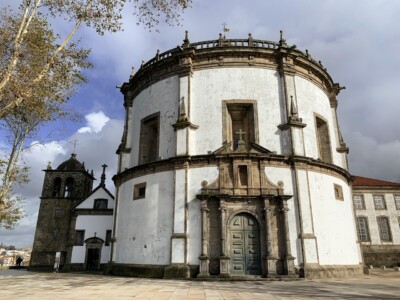
It’s then a short climb up to the Mosteiro da Serra de Pilar, a former monastery. This more elevated vantage point offers even more stellar views.
4. Explore the central area (and stop off for Portuguese coffee and cake!)
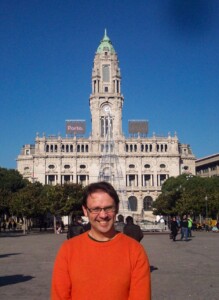
From the area around the Cathedral and Sao Bento train station, it is only a few minutes’ walk to Avenida dos Aliados and its central plaza (Praça da Liberdade).
At the far end of this sweeping open space you’ll see Porto’s monumental town hall looming large over the regal buildings that line the plaza.
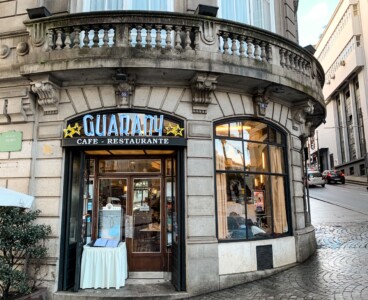
As you walk up, pop into Café Guarany on the left-hand side. With its classy interior and smartly dressed waiters, you will feel like you’ve been transported back in time to the 1930s.
Another popular eatery that attracts tourists is the Café Majestic. Located on the busy shopping thoroughfare, Rua Santa Catarina, Café Majestic is only a ten-minute walk from the main plaza.
Inside its finely decorated surroundings, waiters serve up afternoon tea and cake and a menu of other mouthwatering delights.
However, if it is Portugal’s traditional custard tarts (pastel de nata) you are after, then head up Rua dos Clérigos towards the Torre dos Clérigos.
As you climb up, you’ll see Manteigaria, a medium-sized bakery on the left serving the country’s world famous tart. Here you can munch on piping hot freshly baked pastel de nata (straight from the oven) showered in cinnamon.
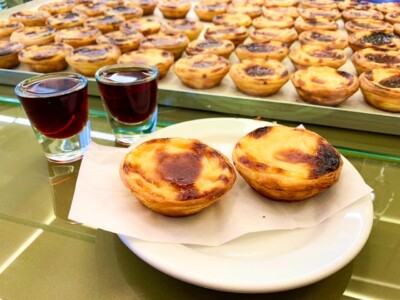
The bakery is also open late at night. We found it was worth skipping dessert during our evening meal to go back to our hotel via this…you can also order a nightcap of the Portuguese cherry liqueur (ginjinha) to go with your cake.
The Torre dos Clérigos (a 76 metre high tower) is also worth climbing if you are on a Porto city break.
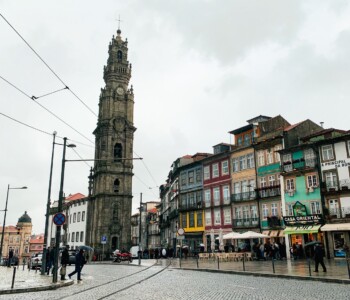
Nearby, on Rua das Carmelitas, check out Livraria Lello, a neo-gothic bookshop that JK Rowling drew on for inspiration when she penned Harry Potter.
Due to its popularity with tourists, you have to book tickets (there is a booth across the road). You’re then likely to have to queue before exploring inside this fascinating building.
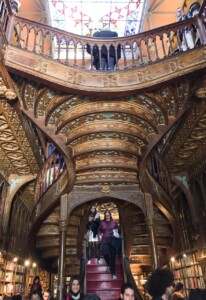
Harry Potter fanatics will be drawn by the twisting staircase. Don’t miss the elaborate stained-glass skylight at the top.
This is also a great area to head out to in the evening for drinks and food. Check out the funky bars lining the three streets that run off Rua das Carmelitas. It’s one of the main spots for nightlife.
5. Visit churches, museums, palaces and gardens
There is an excellent selection of churches, museums, palaces and gardens that are worth visiting on a Porto city break.
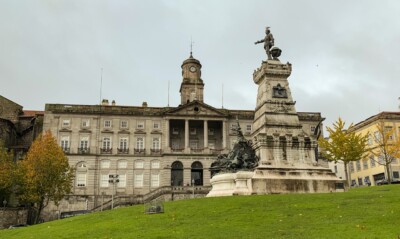
On the way down from São Bento railway station to Riberia’s riverfront, you’ll come to a large square (Praça Infante Dom Henrique).
Here there is a statue of the Portuguese explorer Henry the Navigator marking its centre.
Surrounding the square are two significant buildings that are definitely worth popping inside. The first is the lavishly decorated Palácio da Bolsa (don’t miss the Arabian Hall) and the second is the San Francisco church (Igreja de São Francisco).
Literally, a short hop across the square towards the river and you will find Casa do Infante, a medieval townhouse where Henry the Navigator was born. The building, which was Porto’s first customs house, features an exhibition.
To the north of the square, you will also find the Museu das Marionetas and the Institute dos Vinhos do Douro e do Porto. Both are worth popping inside if you have time.
There are also three churches that you must see, just to marvel at their ornate exteriors. These are the Igreja do Carmo, the Igreja de Santo IIdefonso and Capela das Almas.
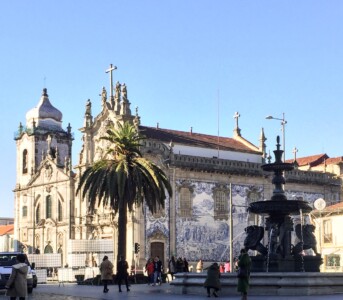
The first church here – the Igreja do Carmo – is a short walk from Torre dos Clérigos. Like the entrance hall of São Bento train station, the side façade of the church is beautifully decorated in the traditional azulejo tiles.
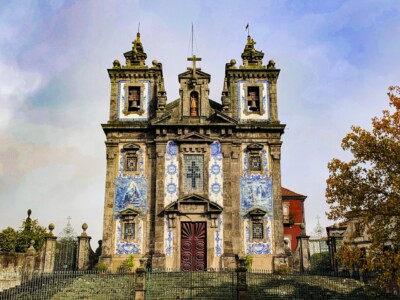
The Igregja de Santo Ildefonso (second image) is a stunning baroque period church. It is only a few minutes from the Café Majestic on Praça da Batalha.
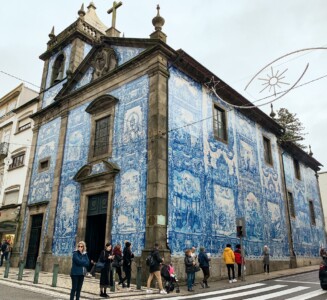
Capela das Almas is on the same road as the Café Majestic and it’s impossible to miss it as you walk up from the café. Clad in dazzling azulejo panels, the church is a popular tourist site.
Some of Porto’s other top sights, notably its museums, are a little way out of the centre.
You will find a superb decorative and fine art museum (Museu Nacional Soares dos Reis) as well as a fascinating photography exhibition. This is housed in a former prison in the Miragaia area (slightly to the west of the Ribeira).
For nature lovers, head to the Massarelos area (west of the Miragaia) and wander round Porto’s exotic botanical garden (Jardins do Palacio de Cristal).
While here, you may want to pop into the nearby Museu do Vinho do Porto. This is a former warehouse that has been converted into a museum where you can read about the history of wine and port making.
6. Take the tram to the coast

Tourists can explore the centre of Porto on two vintage trams.
Both are recommended as they pass by many of the central tourist sites and are not expensive.
The pick of the bunch, however, is a third vintage tram (number 1), especially if you want to catch some fresh sea air. This rickety old tram takes you from the Ribeira along the side of the River Douro to Foz do Douro on the Atlantic coast.
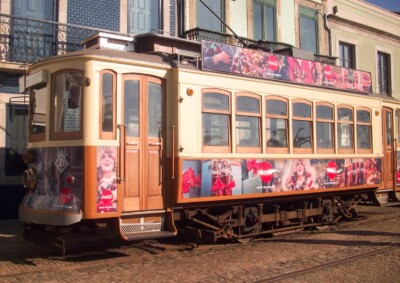
You pick the tram up near the Palácio da Bolsa on Praça Infante Dom Henrique (see above).
The vintage tram trundles along to the coast, passing through the Miragaia and Massarelos areas on the way. This means you can hop off to explore these areas and the tourist sites above if you choose.
Once you get to Foz do Douro, you’ll get spectacular views of the Atlantic Ocean and can walk along the esplanade for miles. There are some eateries and beach bars to stop off at for refreshments.
7. Take a trip further afield
As the gateway to the north of Portugal, Porto makes an excellent base to explore a little further afield.
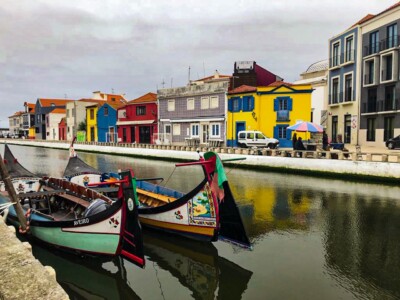
From São Bento railway station, you can easily reach the seaside town of Aveiro to the south.
Marketed as Portugal’s Venice for its small canal network, complete with gondolas, its old town has some good eateries and is only an hour away from Porto by train.
If history is what you’re looking for, then two destinations stand out. The first is Guimarães.
This is an important town in Portugal’s history as it was the birthplace of the Portuguese nation. Little over an hour away from Porto by train, Guimarães’ historic town centre is listed as a UNESCO World Heritage site and there are plenty of historical sites to explore.
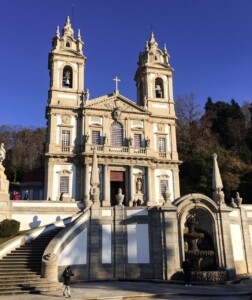
Then there is Braga. This has the additional benefit of being a stepping stone to visit the majestic hilltop sanctuary Bom Jesus do Monte.
The journey time from Porto to Braga is only an hour so you can easily fit both in during your stay.
There’s plenty of history to explore in Braga but we’d recommend heading first to Bom Jesus. This dramatic hilltop centre of pilgrimage is about 5 km outside the town and can be reached by local bus.
More inspiration for short breaks
If you’ve enjoyed a Porto city break, you might also find some of my other posts of interest:
- 2 days in Portugal’s capital, Lisbon
- Short breaks to Marrakech: visiting the Bahia Palace
- A virtual tour of Zurich: how to experience this wonderful city from home
- A weekend in Lyon France
- A Sound of Music tour on a sightseeing trip to Salzburg in Austria
- A short break in Corfu Town, Greece
For more ideas, visit my website.
Porto city breaks: Pin it!
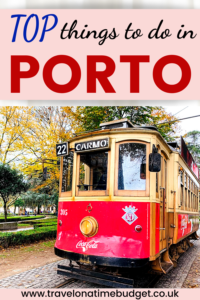
Jointly produced by Emma Marshall and Nick Warburton


